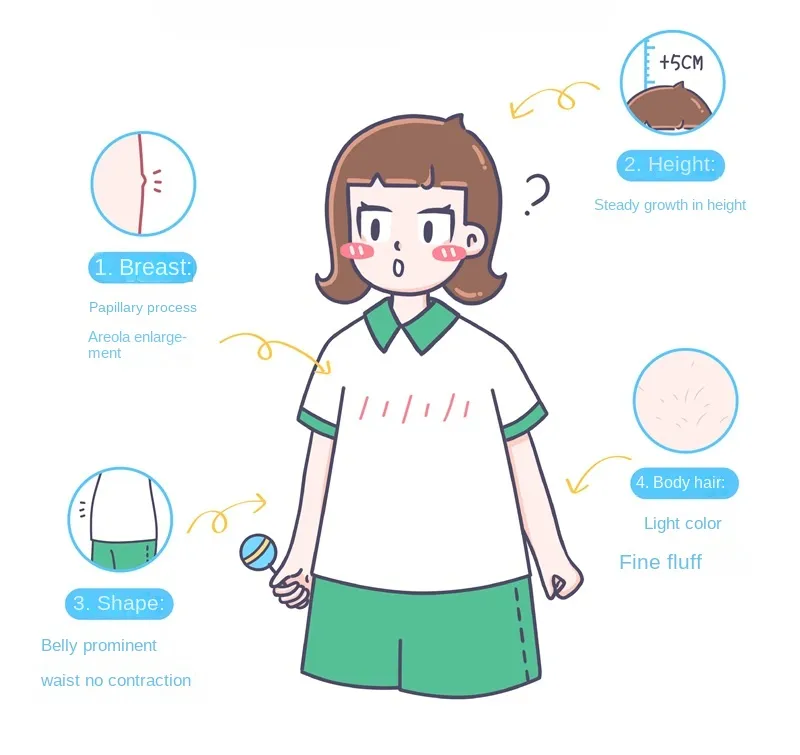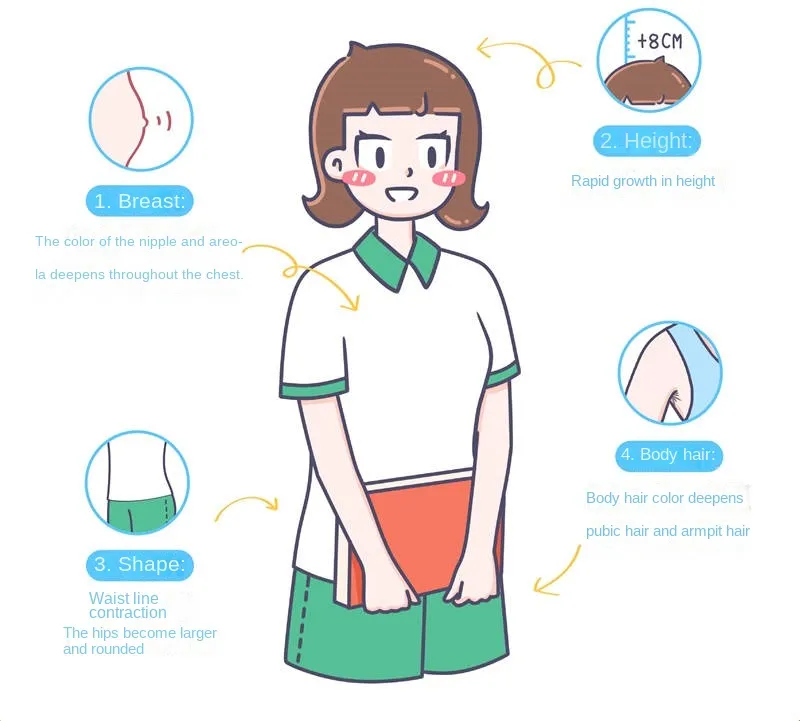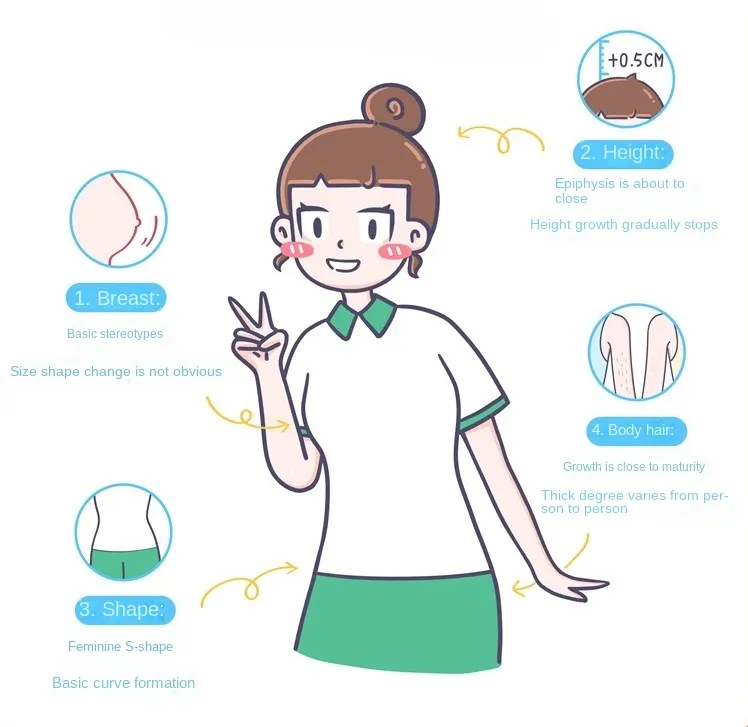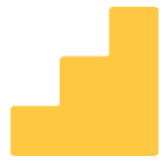When do females start puberty? If you’re a mom, you’ve probably asked this question—maybe more than once. Puberty can feel like a mystery, but knowing what’s normal (and what’s not) makes the whole process way less stressful for you and your daughter.
Let’s talk about when girls start puberty, the stages, what signs to look for, and how to support your child through every change. We’ll keep it real, simple, and packed with the facts you need.
When Do Females Start Puberty? The Real Age Range
Most girls begin puberty between ages 8 and 13. That’s a big window, and yes, it’s totally normal for your child to start a little earlier or later than her friends. Genetics play a huge role, but body fat, nutrition, and even stress can impact when puberty begins.
The average age for a girl’s first period in the U.S. is now about 11.9 years—down from 12.5 a generation ago. About 16% of girls start their periods before age 11, which is nearly double what it was 50 years ago. Early puberty is becoming more common, and experts think it’s linked to things like higher rates of childhood obesity, environmental factors, and even stress.
Girl Puberty Stages: What to Expect
The Earliest Signs of Puberty in Girls
- Development of breast buds (the first sign of puberty): You might notice a small bump under the nipple, sometimes tender or on one side first. This is called breast budding and usually happens around age 8 to 10.
- Growth of pubic hair: Soft and light at first, it gets darker and coarser over time.
- Growth spurt: Girls often grow rapidly—up to 3 inches (about 8 cm) a year—during the middle of puberty.
- Body odor and acne: Hormones can cause oily skin, acne, and the need for deodorant.
Curious about breast changes? Check out our Changing Stages of Breasts Guide.

Puberty signs of tween girl
What Hormone is Responsible for Puberty in Females?
Estrogen is the main hormone responsible for puberty in females. It leads to breast development, the start of periods, and an increase in body fat around the hips and thighs.
The Start of Periods (Menarche)
Most girls get their first period between ages 9 and 15. It’s normal for cycles to be irregular at first, and some girls experience menstrual cramps. If your daughter starts her period before age 11, she’s not alone—this is happening more often now.
Other Changes in Her Body
- Wider hips
- Increase in body fat percentage
- Growth of armpit hair
- Vaginal discharge (clear or white) before the first period

Puberty signs of early teen girl
Signs Puberty is Ending
You’ll know puberty is ending when:
- Breasts are fully developed
- Pubic and armpit hair look adult
- Growth in height slows and then stops (usually two years after the first period)
- Periods become regular

Puberty signs of mid teen girl
Why the Timing of Puberty Matters
Starting puberty earlier or later than peers can be tough emotionally. Early puberty is linked to higher risks of diabetes, heart disease, and even some cancers later in life. If your daughter starts puberty before age 7 or hasn’t started by age 13, talk to your pediatrician.
How to Talk to Your Daughter About Puberty and the Changes in Her Body
Keep it casual—like you’re chatting over coffee. Use real stories, like remembering your own first period or how you handled breast budding at school. Offer good puberty books for girls as resources. Remind her that every girl’s body is different—there’s no “right” age or way to develop.
Supporting Healthy Puberty: Nutrition, Activity, and Self-Esteem
- Nutrition matters: A balanced diet helps puberty progress at a healthy rate. Too much or too little body fat can affect timing.
- Physical activity: Staying active helps with growth and mood.
- Self-esteem: Remind your daughter that feeling awkward is normal. Everyone goes through it.
- Help her feel comfortable: The right first bra makes a big difference. See our First Bra Guide for help.
When to Worry (And When Not To)
It’s normal for one breast to develop before the other, or for breast buds to be a little sore. But see a doctor if:
- Puberty starts before age 7 or after 13
- There’s severe pain, swelling, or a lump that doesn’t feel like a normal breast bud
- Periods are extremely heavy or last more than a week
FAQs About When Do Females Start Puberty
When do females start puberty?
Most girls begin puberty between ages 8 and 13. Some start a little earlier or later, and that’s normal.
What is the first sign of puberty in girls?
Usually, it’s the development of breast buds—a small, sometimes sore bump under the nipple.
How long does puberty last for girls?
Puberty usually lasts 2 to 5 years from the first sign to the end.
What hormone is responsible for puberty in females?
Estrogen is the main hormone that causes the changes of puberty in girls.
How do you know when you’re finished with puberty?
When breast development is complete, pubic and armpit hair look adult, periods are regular, and growth in height has stopped.
What are good puberty books for girls?
Try Brightly’s puberty book list or MomJunction’s recommendations.
Is it normal for puberty to start on one side first or for breast buds to be lopsided?
Yes, it’s common for one side to start before the other. Things usually even out with time.
What if my daughter starts puberty earlier or later than her friends?
There’s a wide range of normal. If you’re worried, check with your pediatrician, especially if puberty starts before age 7 or hasn’t started by 13.
Real Talk: Every Girl’s Puberty Journey is Unique
Every child’s body changes at its own pace. Some girls begin puberty as early as 8, while others might not notice changes until 13. The most important thing? Keep the conversation open, offer good resources, and remind your daughter she’s not alone.
If your daughter is starting puberty and needs her first bra, check out Suyiyi’s collection—designed for comfort, confidence, and all the changes that come with growing up.
When do females start puberty? The answer: whenever their body is ready. And with your support, she’ll be ready too.
